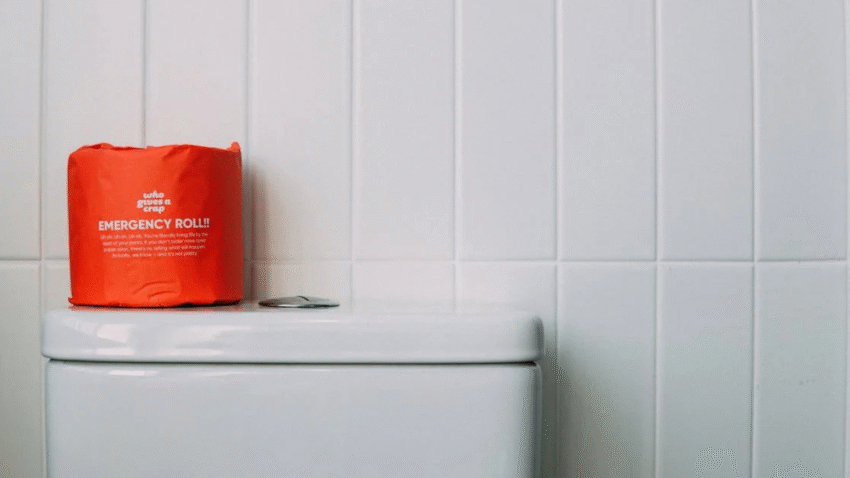Introduction
Is your toilet seat loose, stained, cracked, or simply outdated? Replacing it is easier than you might think. This guide will teach you how to install a new toilet seat with minimal tools and effort. Whether you’re upgrading for comfort, hygiene, or aesthetics, this simple DIY task can make a big difference in your bathroom’s look and feel.
Why Installing a New Toilet Seat Matters in the Bathroom
The toilet seat is one of the most-used bathroom fixtures, and over time it can wear out or become unsanitary. A damaged or unstable seat isn’t just annoying—it can also be a hygiene risk or a safety hazard. Here’s why installing a new seat matters:
- Improves cleanliness and hygiene
- Adds comfort and stability
- Upgrades your bathroom’s appearance
- Reduces risk of pinching, sliding, or breakage
- Easy and inexpensive DIY update
Replacing your toilet seat can also be part of a full bathroom refresh or a response to cracked plastic, broken hinges, or lingering odors that cleaning can’t resolve.
Step-by-Step Guide to Installing a New Toilet Seat
1. Gather the Right Tools and Supplies
You’ll only need a few basic tools:
- New toilet seat (make sure it matches your toilet’s shape—round or elongated)
- Adjustable wrench or pliers
- Flathead screwdriver
- Cleaning supplies (disinfectant wipes or cleaner, paper towels)
Most new toilet seats come with all the mounting hardware included—typically two bolts, nuts, and plastic washers.
Tip: Take a photo or note the old seat’s brand and model, or bring measurements when buying a replacement.
2. Remove the Old Toilet Seat
Start by locating the bolt caps at the back of the existing seat. These are usually plastic caps that snap open with a flathead screwdriver.
- Open the bolt caps to expose the seat bolts
- Hold the plastic or metal nuts underneath the toilet bowl with pliers or your hand
- Use the screwdriver to turn the bolts counterclockwise until they come free
- Remove the old seat and all mounting hardware
Note: If the bolts are rusted or stuck, apply a little WD-40 and wait a few minutes before trying again.
3. Clean the Mounting Area
Before installing the new seat, take a moment to clean the area where the old seat was attached. Use disinfectant cleaner or wipes to remove grime, residue, and bacteria that may have built up under the hinges.
Pro Tip: This is a good time to give your whole toilet a quick clean, especially around the tank, bowl, and base.
4. Align the New Toilet Seat
Place the new seat on the bowl, lining up the holes in the seat’s hinges with the bolt holes on the toilet. Most modern toilet seats have adjustable hinges that allow slight repositioning for a perfect fit.
- Make sure the seat is centered and straight
- Insert the bolts through the hinge holes and down into the toilet bowl holes
Tip: If your new seat has top-mount bolts, you may not need to access the underside of the toilet at all.
5. Secure the Seat with Bolts and Nuts
From underneath the toilet, screw the plastic nuts onto the bolts. Use your hand to tighten them until snug, then use pliers or a wrench for a final quarter turn. Be careful not to overtighten—this could crack the porcelain or damage the hardware.
- Ensure the seat is firmly in place and doesn’t wiggle
- Close the bolt caps if your model includes them
Optional: Some seats come with quick-release or push-button mechanisms for easy future removal and cleaning.
6. Test the Seat for Stability
Once installed, sit down lightly on the seat to check for movement. Lift and lower both the lid and seat to confirm they operate smoothly. If there’s any wobble, recheck the bolt tightness and alignment.
Common Mistakes to Avoid
1. Buying the wrong seat size
Toilet seats come in round and elongated shapes, and choosing the wrong one can lead to a poor fit.
Solution: Measure your existing toilet bowl before purchasing.
2. Overtightening the bolts
This can crack the toilet bowl or strip the plastic threads.
Solution: Hand-tighten until snug, then only a slight extra turn with tools.
3. Forgetting to clean under the old seat
Grime and bacteria often hide under old hinges.
Solution: Disinfect thoroughly before installing the new seat.
4. Misaligning the seat
A crooked seat not only looks bad but feels uncomfortable.
Solution: Take your time aligning the seat and adjust before fully tightening.
5. Skipping the test step
Failing to test the seat could leave it loose or unstable.
Solution: Sit and move around gently to ensure it’s firmly secured.
Extra Tips & Bathroom Hacks
🪑 Try a soft-close toilet seat:
These prevent slamming and add a touch of luxury. They’re easy to install and widely available.
🧼 Choose a quick-release model:
Quick-release toilet seats allow for faster deep cleaning by detaching the seat without removing bolts.
🧽 Keep disinfectant wipes nearby:
Make it a habit to quickly wipe down your toilet seat every few days to prevent grime buildup.
👉 Related article:
Want to keep everything fresh? Check out our guide on how to clean under the toilet rim.
Conclusion
Installing a new toilet seat is one of the easiest and most satisfying DIY upgrades you can do in your bathroom. With just a screwdriver, pliers, and a few minutes of time, you can enhance hygiene, comfort, and appearance all at once.
Whether you’re replacing a broken seat or simply upgrading to a soft-close model, following this step-by-step guide ensures the process is fast, clean, and frustration-free.
📌 Bookmark this guide so you can keep your bathroom fresh, clean, and problem-free all year round.
